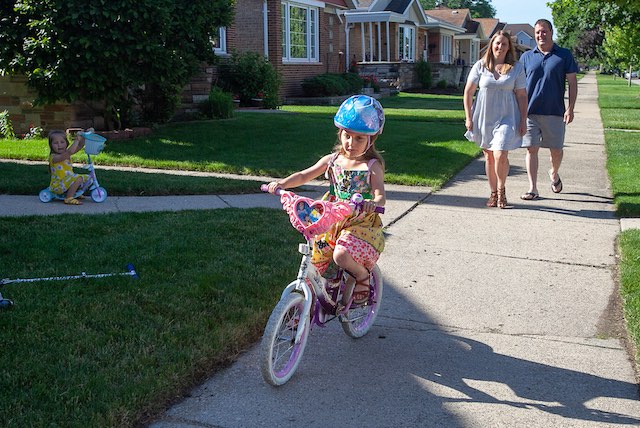Surgery gives little girl's brain room to grow

Leia Annerino wasn’t even a day old when her mother, Susan, noticed something while gazing at her daughter: The little girl’s face wasn’t quite symmetrical, and her right eye did not want to fully shut. Soon, Susan and her husband, Anthony, had their own term of endearment for it: Leia’s Popeye eye.
“When she’d fall asleep, you could see her right eye open a little,” recalled Susan. “We’d always gently tap her eyelid closed because we didn’t want her eye to dry out.”
At her daughter’s 2-month checkup, Susan mentioned this to the pediatrician, and also that Anthony had noticed a bony ridge on Leia’s forehead. A CT scan eventually revealed that Leia’s skull wasn’t shaped correctly.
Most babies are born with seven bone ‘plates’ that form the skull. These plates are linked together by connective tissues that act like flexible seams, making it easier for babies to pass through the birth canal and for their brains to grow. The sutures normally fuse together anywhere between 9 months old to well into adulthood.
Leia's story
Doctors found that parts of Leia’s skull had prematurely fused together, a birth defect called craniosynostosis. It’s estimated that craniosynostosis affects one out of every 2,000 to 3,000 births.
Leia had the problem on the right side of the skull seam that runs from ear to ear — the coronal suture. This led to an uneven appearance around her right eye and forehead. Even more importantly, however, this meant her brain might not have room to grow normally on one side.
“My question was where can I take her? Who operates on this?” said Annerino.
Annerino’s research led her to the University of Chicago Medicine Comer Children’s Hospital Craniofacial Anomalies Multidisciplinary Program (CAMP), one of the most active craniofacial programs in the region. CAMP offers multiple specialists, including neurosurgeons, plastic surgeons, audiologists and otolaryngologists, to diagnose and treat children with abnormalities of the skull and face.
The Mount Greenwood family met with pediatric plastic and reconstructive surgeon Russell Reid, MD, PhD, and neurosurgeon David Frim, MD, PhD, who recommended corrective surgery to remove, reshape and replace the bones in Leia’s skull.
“With craniosynostosis, a child can have developmental, vision, neurologic and airway issues, so there’s a real need to provide holistic comprehensive care,” says Reid, who has done hundreds of such corrective surgeries. “This is a condition that if you don’t treat with expert care, the patients can have terrible outcomes.”
During the 6-hour surgery, Reid exposed the skull bones, while Frim worked to safely remove the bones, keeping the brain safe. Reid then reshaped the bones and put them back together to give Leia’s brain space for future growth. Frim said the team worked seamlessly together.
“Anytime you can group together a bunch of people with different expertise who are aiming for the same goal, you can provide for a better outcome,” said Frim.

Annerino remembers the first moment she saw her daughter after the operation.
“She looked perfect,” said Annerino. “I could tell right away that she looked more symmetrical.”
At Leia’s most recent checkup, the family celebrated the news that Leia no longer needs follow-up appointments, which she had been receiving since her operation at 4 months old. A few days later, the little girl graduated from preschool.
“She’s reading, and she just learned to ride a bike with no training wheels yesterday,” said Annerino. “She’s a typical 5-year-old, academically ready for kindergarten. This is how she's supposed to be."

Russell Reid, MD, PhD
Russell R. Reid, MD, PhD, is a highly skilled surgeon who specializes in pediatric plastic surgery. He is fellowship-trained in craniomaxillofacial surgery and has particular expertise in the area of surgery of the face, jaw, palate and skull.

David Frim, MD, PhD
David M. Frim, MD, PhD, is an internationally recognized clinical neurosurgeon and neurosciences researcher who specializes in the care of children and adults with congenital neurosurgical problems.
